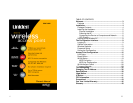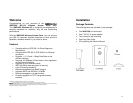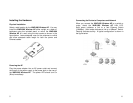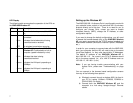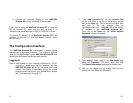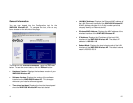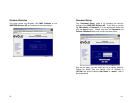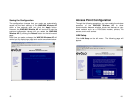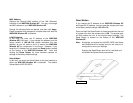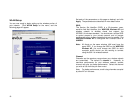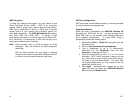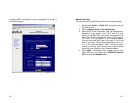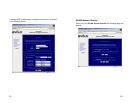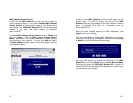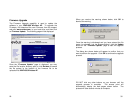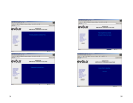
7
LED Display
The following table summarizes the operation of the LEDs on
the WNP1000 Wireless AP.
LED State Description
Power
On When the device is powered, this LED is
on.
Wireless
On
Blink
OFF
Indicates one or more wireless clients are
connected
Indicates that wireless data is being
transmitted and/or received
No wireless transmission occurring.
On
Blink
The LED will light up if the WNP1000
Wireless AP is connected to a hub or
computer (speed indicated by color).
Indicates that data is being
transmitted/received
Ethernet
Green
Amber
Indicates the LAN port is operating at
100Mbps
Indicates the LAN port is operating at
10Mbps
8
Setting up the Wireless AP
The WNP1000 802.11b Access Point is configured to work with
your cable/dsl router, switch or hub and other 802.11b wireless
products directly out of the box. There is no need for you to
configure your Access Point, unless you want to enable
increased security (WEP), change the IP Address, or other
configuration options.
If you want to change the default configurations, you will need
to access the browser-based utility of the WNP1000 Wireless
AP, you need a computer with the TCP/IP protocol enabled and
web browser software (Microsoft’s Internet Explorer, Netscape,
etc.).
In order for your computer to communicate with the WNP1000,
both (your computer and the AP) will need to be on the same
Local Area Network, i.e. they must have similar IP Addresses.
The default IP address of the WNP1000 Wireless AP is
http://192.168.1.10. As a result, your PC’s IP Address should
be on the same network (i.e., at a LAN IP Address such as
192.168.1.2, 192.168.1.3, etc.)
Note: If you are having trouble communicating with your
Access Point, please see “Troubleshooting” on page
37.
You can connect to the browser based configuration screens
from any of the following three options:
a) Wirelessly connect through a wireless 802.11b client in
your PC or Laptop. (Uniden’s PCW300, PCW200 or
PCW100 802.11b clients.)
b) Connect both the WNP1000 Wireless AP and the
computer to a hub using “straight-through” Ethernet
cables.



